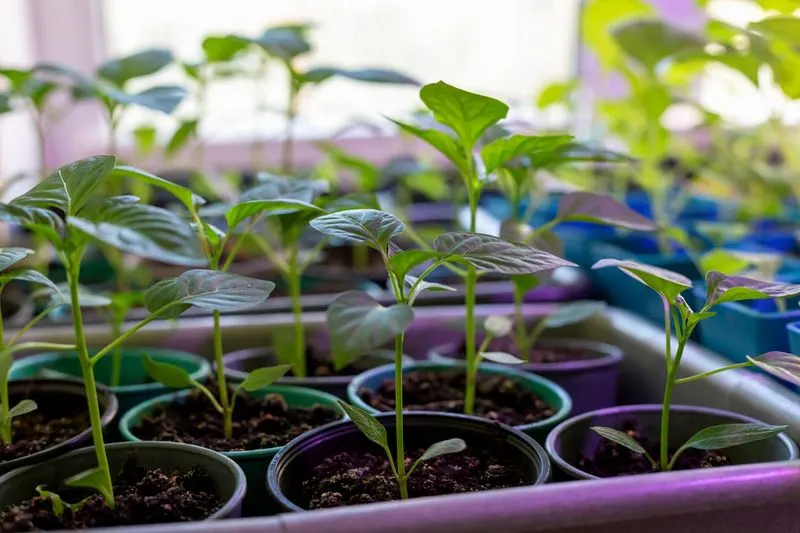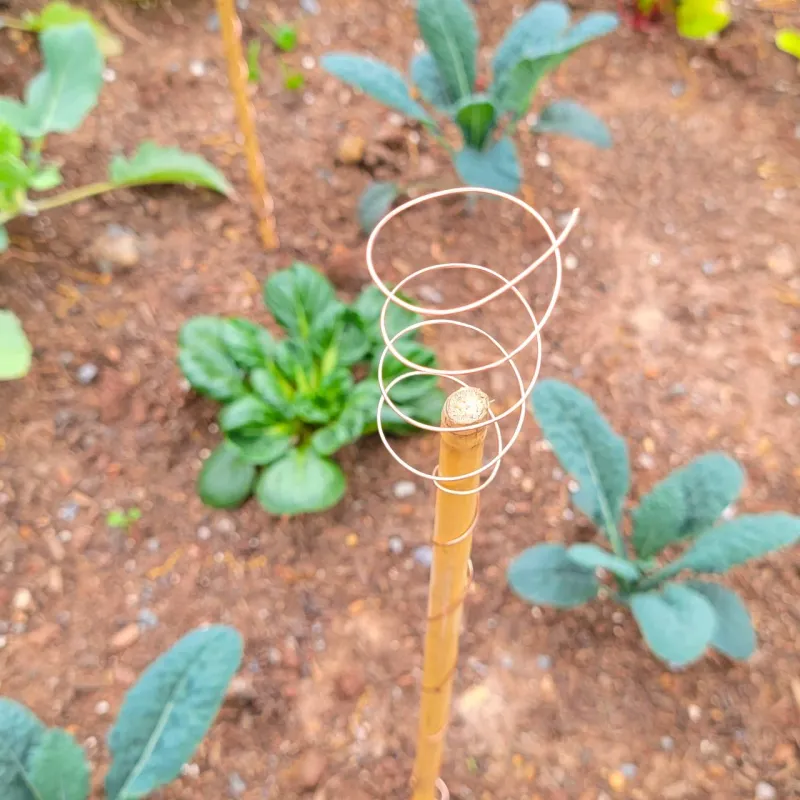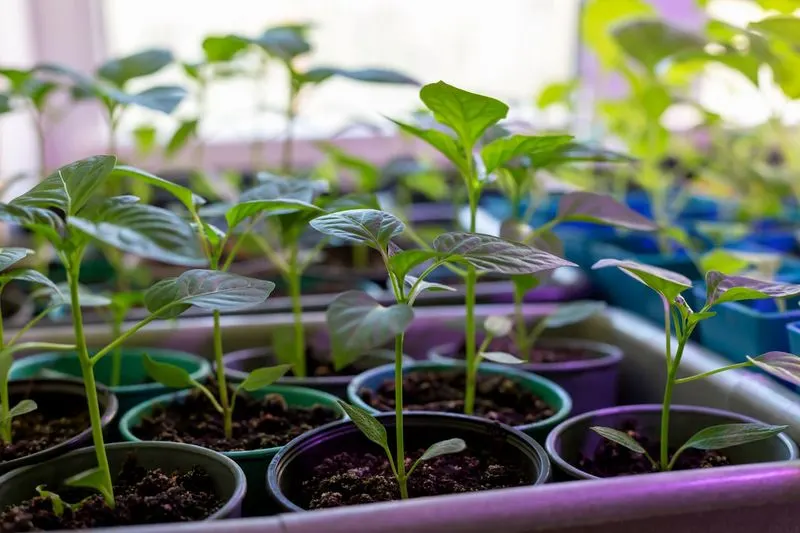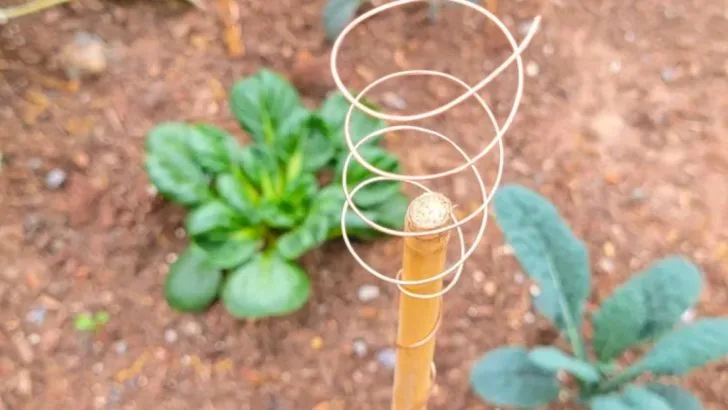Electroculture gardening—the practice of using natural atmospheric energy to boost plant growth—has been gaining attention, but is it just a passing trend or something more? While it may sound futuristic, this concept dates back centuries and has been linked to faster growth, increased yields, and improved soil health.
In this article, we explore 16 reasons electroculture might not be just a trend. From its potential to reduce fertilizer use to its eco-friendly approach to plant stimulation, electroculture offers intriguing possibilities for modern gardeners. Whether you’re skeptical or curious, these insights will help you decide if this gardening technique is worth trying!
Enhanced Plant Growth

Electricity has a profound impact on plant growth, often resulting in more robust and healthier plants. When electrical fields are applied, plants tend to absorb nutrients more efficiently, which can lead to increased biomass. This method can be particularly beneficial in intensive farming systems where maximizing yield is crucial. Such enhancements in growth are not just about bigger plants but also about better quality produce. Farmers have reported improvements in the taste and nutritional content of crops grown with electroculture. This offers a potential game plan for future agricultural strategies.
Pest Control Benefits

Harvests are often jeopardized by pests, but electroculture may offer a natural deterrent. The electric fields can disrupt the life cycles of certain insects, reducing their populations without the need for chemical pesticides. This method not only protects crops but also promotes a healthier ecosystem by maintaining the balance of beneficial insects. Farmers adopting this practice may notice a significant decrease in crop damage, leading to more consistent yields and reduced losses. Consequently, electroculture emerges as a viable alternative to traditional pest control methods.
Soil Health Improvement

Soil quality is critical for plant health, and electroculture contributes positively. By encouraging microbial activity, electrical fields enhance soil fertility and structure. This process aids in the breakdown of organic matter, releasing nutrients that are easily accessible to plants. The improvement in soil health can lead to more resilient crops capable of withstanding environmental stresses. Such practices are especially relevant in areas suffering from soil degradation. By focusing on soil health, electroculture supports sustainable agriculture and long-term productivity.
Energy Efficiency

In the quest for sustainable farming, energy efficiency becomes pivotal. Electroculture systems can be powered by renewable energy sources, such as solar panels, making them environmentally friendly. This alignment with clean energy not only reduces the carbon footprint of agricultural operations but also cuts operational costs. By integrating electroculture with renewable energy, farmers can achieve a sustainable way to enhance crop production. This synergy between clean energy and modern farming techniques represents a step forward in reducing agriculture’s impact on the planet.
Cost-Effectiveness

For farmers, the financial viability of a technique is as important as its effectiveness. Electroculture, despite its initial setup costs, can lead to significant savings. Reduced reliance on fertilizers and pesticides means lower expenditures on these inputs. Additionally, improvements in crop yield and quality can enhance market value and profitability. The long-term financial benefits often outweigh initial investments, making electroculture an attractive option for those seeking cost-effective farming solutions. This approach enables farmers to maintain profitability while adopting sustainable practices.
Innovation in Agriculture

Electroculture represents a leap forward in agricultural practices. Its integration showcases ingenuity and the willingness to explore unconventional methods. As technology continues to advance, farmers are finding new ways to incorporate electricity into daily operations. This spirit of innovation not only drives productivity but also inspires further research and development. By embracing such forward-thinking techniques, the agricultural sector can evolve to meet future challenges. Electroculture is part of a broader movement towards innovative and resilient farming methodologies.
Climate Change Mitigation

The impacts of climate change on agriculture are undeniable. Electroculture offers a tool to enhance climate resilience by improving plant health and yield stability. By fostering robust plant growth, it allows crops to better withstand extreme weather conditions. This resilience can be crucial in regions prone to droughts or floods. Furthermore, by promoting sustainable practices, electroculture helps reduce agriculture’s carbon footprint. It’s a proactive step towards mitigating climate change impacts on food systems. The approach aligns with global efforts to create a more sustainable future.
Reduced Chemical Use

Reducing chemical inputs is a key concern for many in the agricultural industry. Electroculture provides an alternative that minimizes the need for chemical fertilizers and pesticides. By enhancing natural growth processes and deterring pests, it lessens reliance on synthetic solutions. This reduction in chemical use contributes to healthier ecosystems and safer produce for consumers. The shift away from chemicals also aligns with the growing consumer demand for organic and sustainably grown products. Electroculture thus supports the movement towards cleaner and more responsible farming practices.
Increased Crop Yield

One of the most tangible benefits of electroculture is the potential for increased crop yields. By optimizing plant growth conditions through electrical fields, farmers can see substantial improvements in productivity. This boost in yield is not only about quantity but also about quality. Better plant health translates to more nutritious and marketable produce. For regions struggling with food security, such enhancements can make a significant difference. Electroculture offers a pathway to meet growing food demands sustainably. The approach aligns with efforts to ensure food security in a changing world.
Sustainability Factor

Sustainability is at the heart of modern agricultural practices. Electroculture embodies this principle by promoting efficient resource use and reducing environmental impact. By enhancing natural growth processes, it aligns with the principles of sustainable agriculture. The potential to integrate renewable energy further reduces the carbon footprint of farming operations. This holistic approach contributes to long-term agricultural viability. Electroculture is not just a trend but a testament to the commitment towards creating a sustainable and responsible food system.
Adaptability to Various Crops

Electroculture’s versatility is one of its greatest strengths. It’s adaptable to a wide range of crops, from vegetables to grains, making it a valuable tool for diverse farming systems. This adaptability allows farmers to experiment with different crop types, optimizing growth conditions for each. Whether in small gardens or large farms, electroculture provides a flexible solution. This flexibility is particularly beneficial for farmers looking to diversify their operations. As agricultural practices continue to evolve, the ability to adapt to various crops will be crucial for success.
Scientific Support

As electroculture gains popularity, scientific research is beginning to validate its benefits. Studies are exploring how electrical fields influence plant growth and development. This research is crucial for understanding the mechanisms behind electroculture’s success. The growing body of scientific evidence supports the claims made by practitioners and provides a foundation for further innovation. Such scientific backing is essential for widespread adoption and integration into mainstream farming practices. With continued research, electroculture’s role in agriculture could become increasingly significant.
Global Interest

The reach of electroculture extends beyond borders, garnering interest from farmers and researchers worldwide. This global intrigue highlights the universal challenges faced by agriculture, such as climate change and food security. By sharing knowledge and experiences, the international community can drive innovation and improvement. Electroculture serves as a common ground for collaboration and exchange of ideas. The global perspective enriches the practice and fosters a sense of unity in addressing agricultural challenges. Such widespread interest underscores electroculture’s potential as a transformative practice.
Consumer Demand for Innovation

Today’s consumers are more informed and curious about how their food is produced. Electroculture captures this interest by offering a novel and sustainable method of farming. As consumers become more eco-conscious, they seek out products that align with their values. Electroculture-grown produce can meet this demand by providing a story of innovation and responsibility. Farmers who adopt this practice can tap into new markets, appealing to a demographic that values transparency and sustainability. Consumer interest in innovation drives the adoption of such practices.
Environmental Benefits

Electroculture’s environmental impact extends beyond agriculture. By reducing chemical use and enhancing soil health, it contributes to ecosystem balance and biodiversity. These benefits are crucial for maintaining healthy environments that support agriculture and wildlife. Practices that align with environmental health are becoming increasingly important as the world grapples with ecological challenges. Electroculture offers a way to integrate agricultural productivity with ecological preservation. Its environmental benefits extend its relevance beyond farming, contributing positively to global ecological efforts.
Long-Term Viability

Looking ahead, the viability of agricultural practices depends on their sustainability and adaptability. Electroculture’s long-term potential lies in its ability to consistently improve crop quality and yield. By integrating modern technology with traditional methods, it ensures continued relevance in a rapidly changing world. Farmers can plan for the future with confidence, knowing that electroculture offers a sustainable path forward. This long-term viability is essential for securing food systems and supporting agricultural communities globally. Electroculture represents a promising approach for the future of farming.

